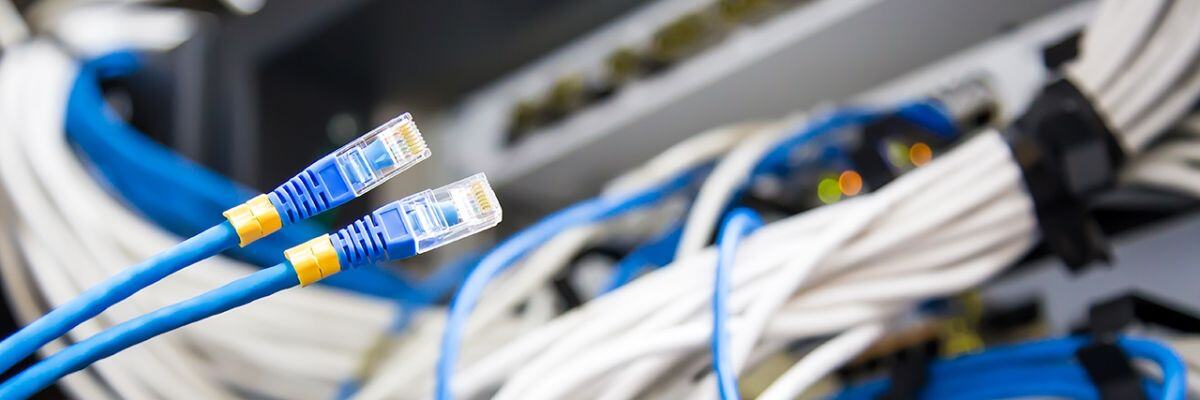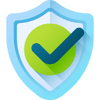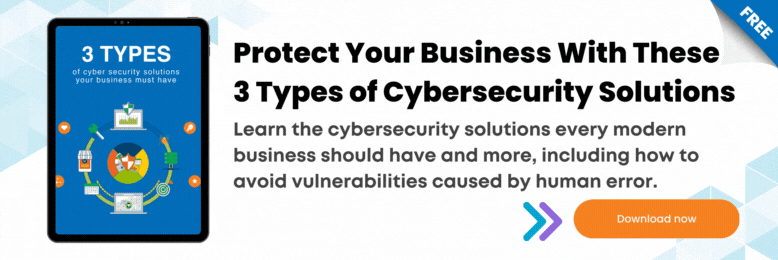How to Protect your Company’s Security Network
Concerned about the 600% rise in cybersecurity attacks in the past few months? So are we. Ransomware, phishing attacks, MITM attacks - your company needs a complete view of cybersecurity and protection beyond antivirus programs.
According to Rob Schenk, a partner at Invitix, cyberattack rates have risen an astonishing 600% within the last six months. As a result, many companies are now looking for ways to protect themselves from ransomware and phishing attacks. You might be one of them; after all, you need to keep your company going and your clients' and employees' data safe.
Now, how exactly are you going to do that?
First, by understanding that the best security programs are not just one program; they are multi-layered and involve the understanding of two things: the components of a good security network and the framework of one. At ITS, we’ve helped the multiple companies we’ve partnered with understand this important idea. So, if a company promises you complete protection from cyberattacks with just one program, you should think twice (probably thrice) about doing business with them.
Think of it like going to war - you wouldn't send one soldier to fight off a war tank, right? You have other equipment and people ready to get that out of the way. That's why antivirus software isn't enough. It's not about finding the best program; it's about finding the correct strategies and tools to ultimately keep your data - and your business - safe.
Components of a Cybersecurity Network

Let's take a holistic look at what exactly makes up a cybersecurity network beyond simple antivirus programs. A holistic approach will serve you better than choosing one program and sticking to that.
People
 People use your database, and they are an integral part of keeping your system safe. Your employees know things like your system's password and how to contact your clients - something that hackers would also love to know. And unfortunately, there's always room for personal error. That's why you must train your employees to recognize possible attacks such as malware installations, phishing attempts, and man-in-the-middle scams. We can't stop a problem we aren't aware of, and knowledge mixed with proper security training is one of the best ways to fight against cyberattacks.
People use your database, and they are an integral part of keeping your system safe. Your employees know things like your system's password and how to contact your clients - something that hackers would also love to know. And unfortunately, there's always room for personal error. That's why you must train your employees to recognize possible attacks such as malware installations, phishing attempts, and man-in-the-middle scams. We can't stop a problem we aren't aware of, and knowledge mixed with proper security training is one of the best ways to fight against cyberattacks.
Process
 A process is a routine of checks and balances to help people commit fewer mistakes. By having this, you can easily safeguard your data by implementing constant security checks as part of your daily process. It would be amiss for companies to underutilize this in guarding data. As a company, you can schedule consistent risk assessments, put multi-factor authentication as a standard, see where there are out-of-place transactions and have constant updates regarding the latest technology that hackers and cybersecurity companies use.
A process is a routine of checks and balances to help people commit fewer mistakes. By having this, you can easily safeguard your data by implementing constant security checks as part of your daily process. It would be amiss for companies to underutilize this in guarding data. As a company, you can schedule consistent risk assessments, put multi-factor authentication as a standard, see where there are out-of-place transactions and have constant updates regarding the latest technology that hackers and cybersecurity companies use.
Technology
 Every business - big or small - uses some form of technology. It is also a huge aid in keeping information safe. We all know how fast technology moves in the 21st century and how these improvements help us daily. Hackers are acutely aware of this too. It's a constant race between companies and hackers to see who can protect or collect data the best. Outdated technology is a security risk that companies shouldn't tolerate because it opens up your data to hackers who already know how to break into those systems.
Every business - big or small - uses some form of technology. It is also a huge aid in keeping information safe. We all know how fast technology moves in the 21st century and how these improvements help us daily. Hackers are acutely aware of this too. It's a constant race between companies and hackers to see who can protect or collect data the best. Outdated technology is a security risk that companies shouldn't tolerate because it opens up your data to hackers who already know how to break into those systems.
The framework of a Cybersecurity Network

After understanding where you are with your company in terms of people, technology, and process, it's now time to refine your entire framework. Your company's framework is how you choose to structure your cybersecurity process. There are five different steps (according to the National Institute of Standards and Technology (NIST) framework):
- Identify
- Protect
- Detect
- Respond
- Recover
STEP #1: Identify
 Identification involves a complete understanding of the systems you are already working with. Of course, you now already know this, but it's worth repeating: you can only protect what you know you have. Rob Schenk pointed out that companies need to ask questions like what computers are connected to your system? Where is your data stored? What programs do you use?
Identification involves a complete understanding of the systems you are already working with. Of course, you now already know this, but it's worth repeating: you can only protect what you know you have. Rob Schenk pointed out that companies need to ask questions like what computers are connected to your system? Where is your data stored? What programs do you use?
After establishing what you have, you can now ask yourself what you need to do to keep everything safe - leading to the next step.
STEP #2: Protect
 Now's the time to ask yourself how you can consistently protect your data. This is the step your antivirus program falls under. Take note, it's a small part of the entire process. Here's where you ask questions like what safeguards you will use aside from antivirus (especially if your antivirus program is outdated)? Who is allowed into your system? How do you maintain your level of security? Are your employees aware of ways to keep the data safe? Remember that the three components of a security network are critical in this step, as each element needs to be adequately protected.
Now's the time to ask yourself how you can consistently protect your data. This is the step your antivirus program falls under. Take note, it's a small part of the entire process. Here's where you ask questions like what safeguards you will use aside from antivirus (especially if your antivirus program is outdated)? Who is allowed into your system? How do you maintain your level of security? Are your employees aware of ways to keep the data safe? Remember that the three components of a security network are critical in this step, as each element needs to be adequately protected.
STEP #3: Detect
 After establishing how you're protecting your system, it's time to make sure you can identify possible threats. Companies need to start with the mindset that one way or another, they're going to be hacking attempts, and it's necessary to have tools that can find these attempts. It's impossible to completely mitigate the risk in the cyber environment we have now. What software are you going to use for this?
After establishing how you're protecting your system, it's time to make sure you can identify possible threats. Companies need to start with the mindset that one way or another, they're going to be hacking attempts, and it's necessary to have tools that can find these attempts. It's impossible to completely mitigate the risk in the cyber environment we have now. What software are you going to use for this?
STEP #4: Respond
 If we're planning for inevitable cyberattacks, we need to factor in what we need to do during a real-time attack. If a threat gets through your system, how are you going to respond? Do you have enough ability to root them out, or are they going to be able to take over your system quickly? It's our job to make sure it's not easy for them. No one wants to be easy prey for hackers.
If we're planning for inevitable cyberattacks, we need to factor in what we need to do during a real-time attack. If a threat gets through your system, how are you going to respond? Do you have enough ability to root them out, or are they going to be able to take over your system quickly? It's our job to make sure it's not easy for them. No one wants to be easy prey for hackers.
STEP #5: Recover
 Now it's time to assume the worst-case scenario - what will you do if your system becomes completely compromised? How will you recover the data? Do you have back-ups onsite and offsite? How are you going to keep the client's trust with their data leaked into the world? You need to make sure that you'll still be able to do business even with your data wiped off your main database.
Now it's time to assume the worst-case scenario - what will you do if your system becomes completely compromised? How will you recover the data? Do you have back-ups onsite and offsite? How are you going to keep the client's trust with their data leaked into the world? You need to make sure that you'll still be able to do business even with your data wiped off your main database.
Make sure your company is Secure and Protected
After understanding the levels in the framework, now is the time to thoroughly research the specifics of each step, like what programs to use and how to implement them. You’ll need a thorough assessment of your company’s needs and recommendations for tried and tested programs that can protect your data effectively.
Research and awareness are the keys, especially in this fast-paced tech race companies are engaging in. So be aware of what you already have and find ways to do what you need to do. If you have more questions, speak with our team, who have created strong security networks for multiple clients.


